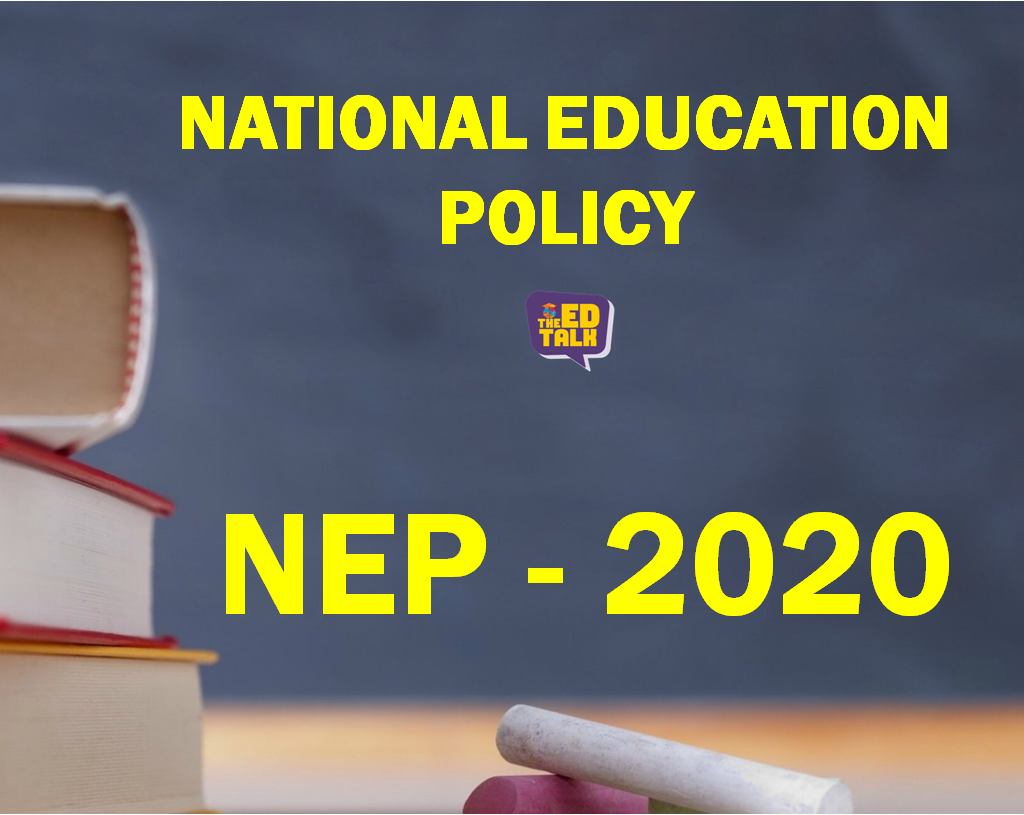THE EDTALK | PONDICHERRY, INDIA:
National Education Policy 2020 approval in the midst of an unprecedented pandemic demonstrates polity’s commitment to embrace transformation that is meaningful to society. NEP 2020 is a culmination of efforts of various Ministers at the helm as well as officials and experts of the Ministry of Education, and in other Ministries such as Women and Child Development, Youth & Sports, Culture, etc.

The National Education Policy 2020 focuses on outcomes while heeding to global best practices, future trends, nuances of emotions at grassroots and amplifying the spirit of Bharat and Bharatiyata. In this author’s experiential worldview, Bharatiyata is, in a nutshell, doing anything with “trikarana shuddhi (holistic harmony among Thought – Word – Action [TWA]) towards attaining happiness for oneself and all around“.
The perception of divergence between India & Bharat is addressed in the vision of this policy, “This National Education Policy 2020 envisions an education system rooted in Indian ethos that contributes directly to transforming India, that is Bharat, sustainably into an equitable and vibrant knowledge society, by providing high-quality education to all, and thereby making India a global knowledge superpower“.
The notion of global citizenship is given a face-lift and validated – “The vision of the National Education Policy 2020 is to instill among the learners a deep-rooted pride in being Indian, not only in thought, but also in spirit, intellect, and deeds, as well as to develop knowledge, skills, values, and dispositions that support responsible commitment to human rights, sustainable development and living, and global well-being, thereby reflecting a truly global citizen“.
Central idea of National Education Policy 2020
(a) empowering students,
(b) prioritizing accountability & autonomy,
(c) encouraging agility in the functioning of the institutions.
The focus on teachers, languages, value-education are some examples of how the national education policy 2020 seeks to usher in the spirit of Bharat, i.e., Bharatiyata.
In this policy’s implementation, States and Universities have to adopt an approach that: (1) maximizes success of the sub-systems and individual entities under their purview and (2) prioritizes for nullifying the hurdles to system’s fostering excellence
What does the policy hold as imperatives to us in the higher education fraternity – educators, administration and leaders?
- The policy seeks to bring respect, dignity, character to the noble profession of teaching while acknowledging the role of teachers in nation-building. At an institutional level, a future-proof structural and operational framework will ensure NEP’s governance-oriented instrumentalities that are facilitative and enabling in nature, are utilized effectively to develop the teaching capabilities at institutions
- Open innovation led internalization and externalization of our institutions is essential as it augments the interaction between the teaching and learner’s community within an institution as well as between the institution (academics) and industry (professionals) facilitated by technology
- Prioritizing growth and influence of the institution through technology centered approach is critical for survival and success of the institutions. The mantra must be to proactively broaden Institution’s activity-frame. Active engagement of industry through a well-founded mutually beneficial industry – institute interactivity will aid growth of our institutions
- Role of the Institution vis-à-vis Society deserves renewed mainstreaming as strategic priority at our institutions. A question to ask ourselves is, “what is the additional and augmented value of our institution to the immediate neighborhood, region and nation?”. Be it a teaching intensive institution or a research-intensive institution, a large multi-disciplinary university or a stand-alone college, there are ways to raise institution’s stature socially and societally
- Agile comes of age – and with it a certain level of complexity for institutions, for the greater purpose of students’ success. The policy seeks to infuse agility, de-bureaucratization and de-silo by enabling movement of students – easy credit transferability options – within and among institutions for specific courses (credits). Policy ushers in a student’s cause provision with multiple entry – exit – re-enter option. Students can enter and leave with stage-aligned credentials to return later to continue/complete education. This can be a source of enormous opportunities for institutions that effectively manage their planning and administrative operations
Written by Dr. R P Raya, Vice President – Bhartiya Shikshan Mandal (BSM) (http://bsmbharat.org) & Professor (Retd) – Pondicherry University (www.profraya.in)*
(*The views, thoughts, and opinions expressed in this article belong solely to the author, and not necessarily to the author’s organization)
News Disclaimer: This story is provided by PRNewswire. The EdTalk will not be responsible in any way for the content of this article.
Subscribe to The EdTalk Newsletter!

